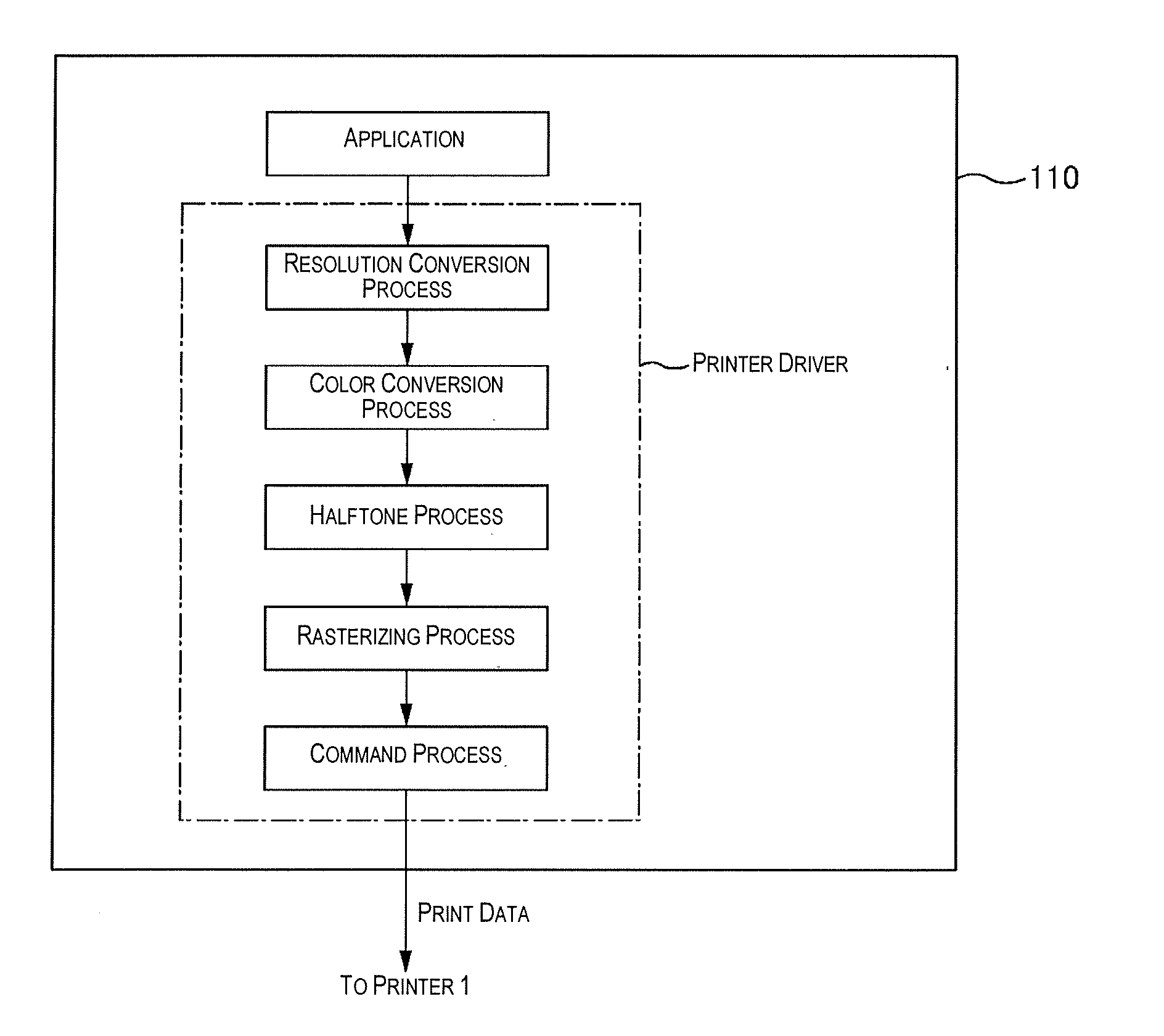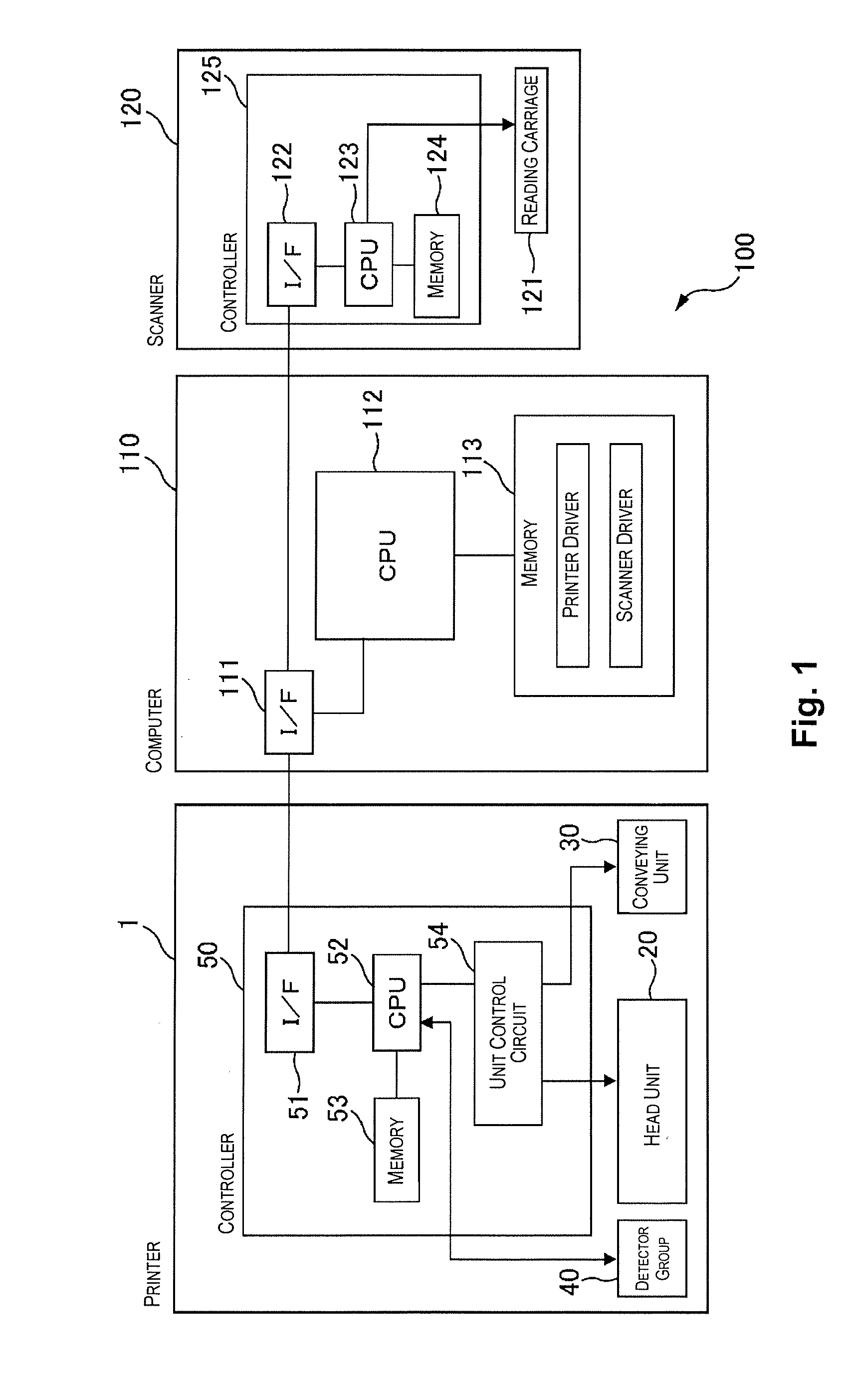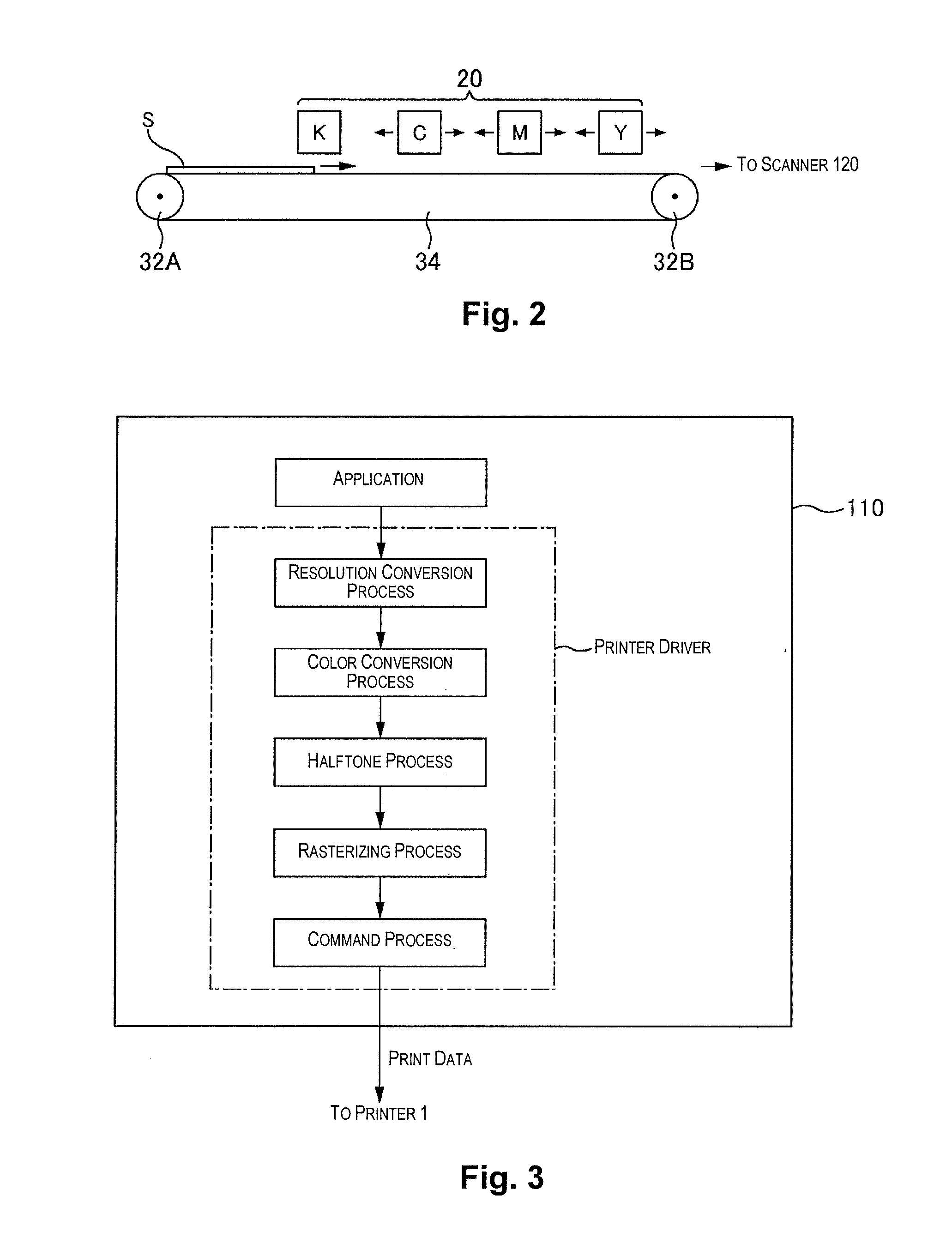Printing device
a printing device and printing technology, applied in printing, inking apparatus, other printing apparatus, etc., can solve the problems of blurring, bleeding, risk of bleeding between inks of different colors, etc., to shorten the time duration of dot formation action, increase conveying speed, and improve printing speed
- Summary
- Abstract
- Description
- Claims
- Application Information
AI Technical Summary
Benefits of technology
Problems solved by technology
Method used
Image
Examples
first embodiment
Modification of First Embodiment
[0089]In the first embodiment previously described, the heads were moved in the conveying direction, but in this modification, the heads are provided with pluralities of nozzle rows aligned in the conveying direction, and the nozzle rows used in the heads are varied according to the image duties.
[0090]FIG. 6 is an explanatory diagram of the modification of the first embodiment. In this modification, as illustrated, the cyan ink head C is provided with six nozzle rows in the conveying direction (in order of c1 to c6 from the upstream side), the nozzle rows consisting of pluralities of nozzles for discharging ink aligned in the paper width direction.
[0091]Similarly, the magenta ink head M is also provided with six (m1 to m6) nozzle rows aligned in the conveying direction, and the yellow ink head Y is also provided with six (y1 to y6) nozzle rows aligned in the conveying direction.
[0092]According to the duty based on the print data, the controller 50 of ...
second embodiment
Modification 4 of Second Embodiment
[0122]In the previously described embodiments, a line printer was used, but Modification 4 of the second embodiment uses a printer (a so-called serial printer) which prints an image on a medium by repeatedly performing a conveying action for conveying the medium in a conveying direction and a dot-forming action (also referred to as a “pass” hereinbelow) for discharging ink and forming dots while moving the heads in a direction (the movement direction) that intersects the conveying direction.
[0123]FIG. 13 is a perspective view of the printer (a serial printer) of Modification 4 of the second embodiment.
[0124]A carriage 11 is capable of moving back and forth in the movement direction, and is driven by a carriage motor (not shown). In the carriage 11, ink cartridges which store ink are detachably held. In the present embodiment, the carriage 11 is equivalent to the movement mechanism.
[0125]A head unit 20′ has a plurality of heads for discharging ink, ...
third embodiment
Modification 3 of Third Embodiment
[0160]In the embodiments previously described, the entire image printed on the paper S is scanned with the scanner 120. However, in this case, the scanning time is long and there is a large amount of data for the scanned image.
[0161]In view of this, in this Modification 3, only a partial region of the image is scanned, rather than the entire image, to determine whether or not there is bleeding.
[0162]FIG. 20 is a drawing showing an example of a printed image in Modification 3 of the third embodiment. In FIG. 20, region 1 is printed in cyan, region 2 is printed in blue (a mixture of cyan and magenta), and region 3 is printed in green (a mixture of cyan and yellow).
[0163]In this case, scanning the portion susceptible to blurring (e.g. the portion enclosed by the dotted lines in the drawing) makes it possible to reduce scanning time to below that of scanning the entire image. At this time, bleeding can be effectively suppressed by selecting the portion ...
PUM
 Login to View More
Login to View More Abstract
Description
Claims
Application Information
 Login to View More
Login to View More - R&D
- Intellectual Property
- Life Sciences
- Materials
- Tech Scout
- Unparalleled Data Quality
- Higher Quality Content
- 60% Fewer Hallucinations
Browse by: Latest US Patents, China's latest patents, Technical Efficacy Thesaurus, Application Domain, Technology Topic, Popular Technical Reports.
© 2025 PatSnap. All rights reserved.Legal|Privacy policy|Modern Slavery Act Transparency Statement|Sitemap|About US| Contact US: help@patsnap.com



